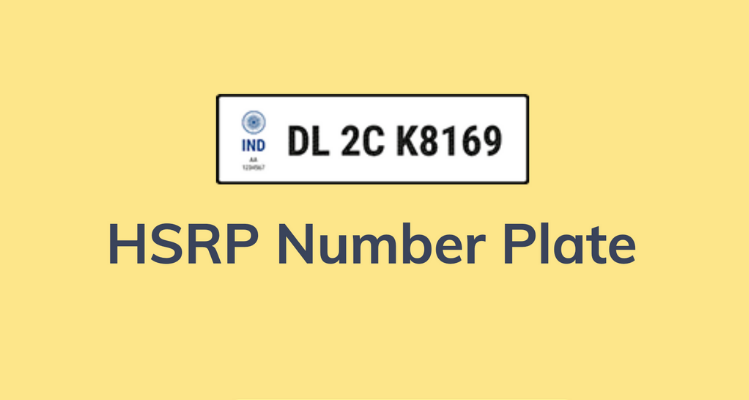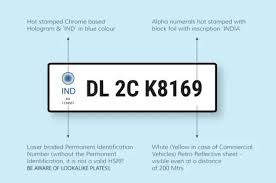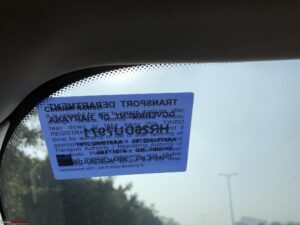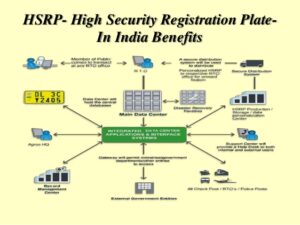
 The Ministry of Road Transport and Highways (MoRTH) and Delhi Transport Department have made it mandatory for all vehicle owners to fix a high security registration plate (HSRP) and colour-coded plate on their vehicles that have been sold before April 2019. The fine for not affixing HSRP plate on a vehicle can range from Rs 5,000 to Rs 10,000.
The Ministry of Road Transport and Highways (MoRTH) and Delhi Transport Department have made it mandatory for all vehicle owners to fix a high security registration plate (HSRP) and colour-coded plate on their vehicles that have been sold before April 2019. The fine for not affixing HSRP plate on a vehicle can range from Rs 5,000 to Rs 10,000.
Recently, the Delhi Government introduced a hefty fine for all vehicles plying without High-Security Registration Plates (HSRP). The traffic police are now getting stricter with the fines as the number of offenders are increasing by the day. As of now, this rule is mandatory only in Delhi and UP. Soon, other states will also start following the order. So, before you are caught by the police and made to pay a hefty fine, here is the complete guide to HSRP and all the steps to install it.
So, what is this HSRP number plate, and why every vehicle owner in the national capital must affix this on their vehicle?
What is an HSRP?

HSRP is an aluminum-made “high-security registration plate” which is fixed on a vehicle using two non-reusable locks. A chromium-based hologram of Ashoka Chakra of 20 mm x 20 mm size is applied by hot stamping on the top left-hand corner of the plate in both front and rear plates to protect against counterfeiting.
The permanent identification number (PIN) of a minimum of 10 digits is laser branded into the reflective sheeting on the bottom left-hand side of the registration plate with a letter size of 5 mm. The HSRP is linked electronically to the vehicle after its affixture on the vehicle on registration.
What is a Colour Coded Sticker?
A colour coded sticker will indicate the fuel type of the car and the Bharat Stage. For petrol and CNG cars, you will get a blue sticker, orange for diesel cars and green for EVs. BS6 compliant cars will additionally have a green strip on the top of the sticker. You have to install the sticker on the windscreen from inside.
Why is HSRP Mandatory?
The prime reason why HSRP has been made mandatory is that the old number plates are quite easy to temper with and can be misused by car thieves. However, the HSRP plates come with a non-removable snap-on lock and are difficult to replace.
The HSRPs comprises details like engine number and chassis number in a centralised database. The data helps in identifying a stolen car. The stored data along with a 10 digit PIN helps in identifying a stolen car. The HSRP plates are only issued once the vehicle owner passes on essential details like engine number and chassis number.
What is HSRP installation cost?
The cost of HSRP varies from state to state. On average, the HSRP costs around Rs 400 for two-wheelers, and up to Rs 1,100 for four-wheelers, depending on the category.
Where can you purchase the HSRP plate?
Delhi and Uttar Pradesh-based vehicle owners can purchase the HSRPs from government authorised portal –bookmyhsrp.com. The HSRPs plate can also be purchased from RTOs or authorised auto dealers.
How to apply online for HSRP plate?
Step 1: Go to government authorised web portal–bookmyhsrp.com
Step 2: Fill in all the details, such as vehicle number, chassis number, engine number, address, contact number, fuel type, etc.
Step 3: If it’s your personal vehicle then click on “non-transport” under the vehicle’s class option
Step 4: Submit a username and password will be sent to the registered mobile number
Step 5: After submitting, the user will again have to log in to make the payment. A receipt will be generated
Step 6: As soon as the HSRP number gets ready, the customer will receive the message on their registered mobile number.
More than 32 lakh vehicles, including 10-12 lakh cars and 20 lakh two-wheelers, registered before 2019, have to get the HSRP and third colour-coded sticker plates installed.
Financial and Business expert having 30+ Years of vast experience in running successful businesses and managing finance.







